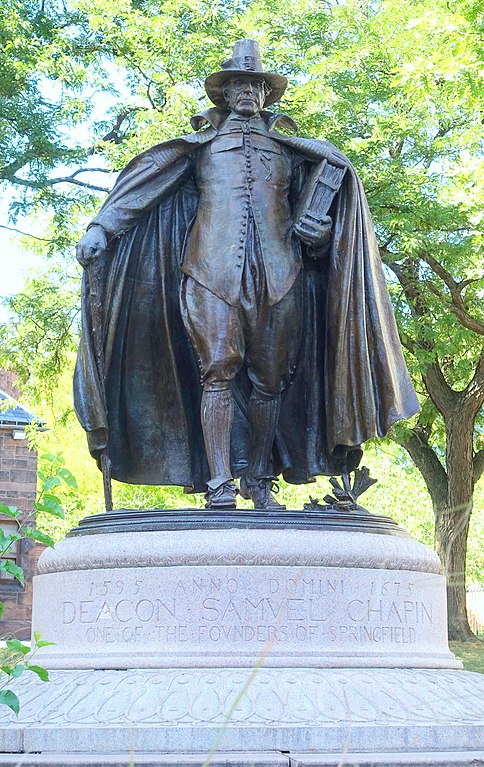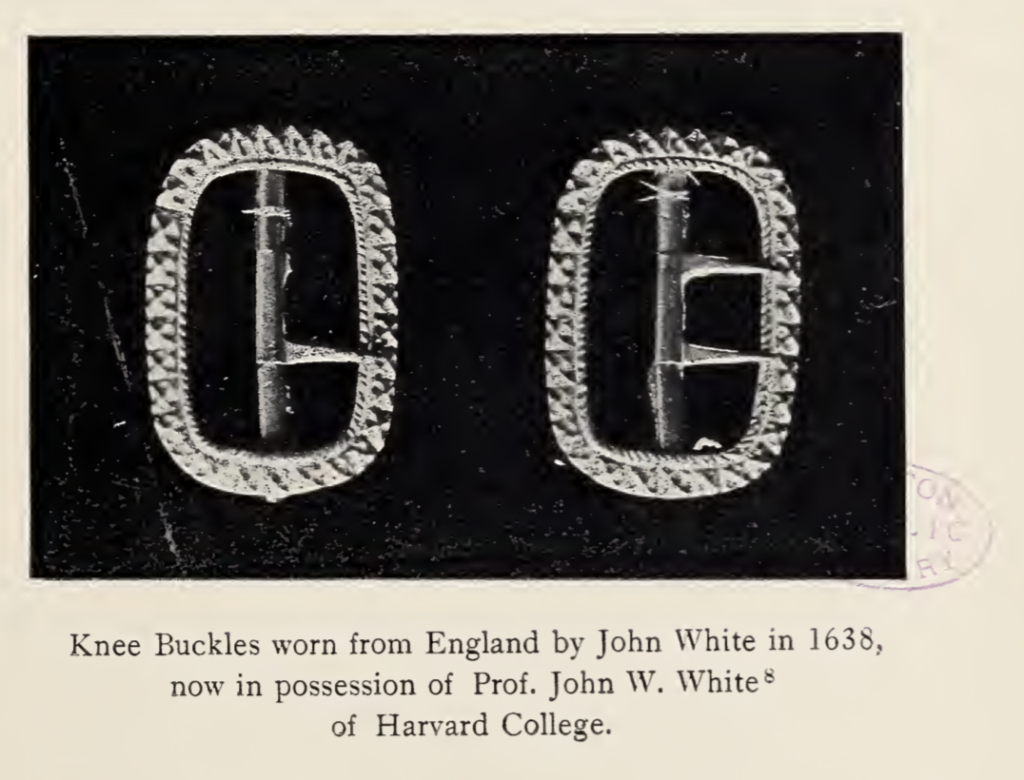Sorting Sunday: John White, Our Puritan Immigrant

McMurray Family, Benjamin Family (Click for Family Tree)
Now that we are all post Thanksgiving-turkey-and-pie-food-comas and on to the shopping frenzy, if your feet or fingers would like to take a break, here is a bit about our own Puritan immigrant, John White.
First, an important note: There are two other men named John White who came to the colonies very early. One, a minister and founder of Massachusetts, travelled the ocean on another ship named Mayflower– not the original, 1620 vessel- and the other came in 1632 on the ship Lyon. Our McMurray-Benjamin line is not related to either of these men, as far as we have been able to ascertain. (See notes below.) There are some online family trees, however, that do have these three men mixed up (I too was confused by them for many years), so be careful out there in wild, wild GenealogyTreeLand.
∇∇∇∇∇∇∇∇∇∇∇∇∇∇∇∇∇∇∇∇∇∇∇∇∇∇
The years before 1638 were difficult ones for the English. Charles the First was king, and he, like his father, had abandoned many of the practices of the Anglican Church founded by Henry VIII in the 1530s. The “Eleven Years Tyranny” from 1629-1640 was also called “The Personal Rule,” as Charles insisted on the return of sacraments and religious ceremonies similar to those of the Catholic Church, which had been outlawed for much of the previous century. This “return to popery,” as many called it, caused the Puritans to become even more dissatisfied with the English government. Charles 1 created illegal taxes as well, placing significant burdens on the common people, including many merchant Puritans, and was so frustrated with Parliament not giving him what he wanted that he disbanded it several times. (Hence, “The Personal Rule.”) With further persecution of Puritan clergy and laymen alike, many more decided to leave England. By 1638, four Puritans had been “martyred” to the cause (tortured and imprisoned, but not executed), the last of them due to importation of works censored because they were critical of the king and his government. Many Puritans lost hope that their religion and country would be reformed to be more “pure.” Perhaps this was the final motivator for “our” John White and his family to undertake the perilous voyage to New England. It was good timing, as civil war was soon to come in England (1641).
We have no record of exactly when and from where the John White family took leave of chaotic England and set sail, nor the name of the ship that carried them to the shores of New England. In 1784, a descendant recorded that John came from the west part of England, and more recent research verifies that he was baptized in South Petherton, Somerset, England (SW England), and born about 1602. He married Joan West in Drayton Parish of Somerset, in 1627. Five of the known White children were born in England, with Mary born there about 1635; the rest were born in Massachusetts. There is record of John White being “of Salem in the Province of Massachusetts Bay, 1638,” per the White genealogy, although a GoogleBooks description states they migrated in 1639 to Salem, Massachusetts. (This date might be because of the land grant date- see next paragraph.)

The Puritans had strict rules for those who lived in their colonies, and John was officially “received an inhabitant of Salem” in August, 1639, when he was granted 60 acres of land. On Feb.1, 1642, he was granted 6 acres of meadow at nearby Wenham, which he had already been mowing “for these 2 or 3 years past.” Town records note at least 48 more acres were granted to John White, and the first saw and grist mill in Wenham was built on a stream that ran through John’s land.
Although there has been an assumption that John White was a Puritan, curiously, we have no real documentation of him being a church member. More to come on that point, but we do know that he lived in Puritan colonies and was granted land by the Puritans. He and his family came to New England just 18 years after the first Pilgrims landed, but their stories differed in many ways- we will explore that further in future posts.
Notes, Sources, and References:
- “Mayflower” was a common name used for ships in England. A second Mayflower made the trip to Plymouth Colony in 1629, also carrying Puritans from Leiden. In 1630 this same Mayflower was a part of the Winthrop Fleet, and the “other” (Rev.) John White, of Dorchester, England, was a part of passengers in this fleet. This Mayflower made 3 more successful trips to the colonies but was lost on a fourth trip in 1641.The original Mayflower of Plymouth Rock fame had returned to London in 1621, and her captain and owner died in 1622. The ship laid in the Thames in London (it is believed) until an appraisal in 1624 for Capt. Jones’ estate inventory. No one knows for sure what happened to her after that time, though it is surmised she was taken apart and timbers used in various land structures. See https://en.wikipedia.org/wiki/Mayflower for more information.
- Yet another John White of Messing, Essex, England, immigrated to the colonies in 1632 on the ship Lyon. He first lived in Cambridge, Massachusetts, then Hartford, Hadley, and Hartford again. See The Great Migration Begins: Immigrants to New England 1620-1633, Vols. 1-3, page 1976-1979, by Robert Charles Anderson, NEHGS.
- https://en.wikipedia.org/wiki/Puritans, https://en.wikipedia.org/wiki/History_of_the_Puritans_under_King_Charles_I
- Genealogy of the Descendants of John White of Wenham and Lancaster, Massachusetts. 1638-1900, in Two Volumes. Almira Larkin White, 1900. Volume 1 has provided information for this blog post. Both volumes are available on archive.org.
- Ancestry.com. Colonial Families of the USA, 1607-1775 [database on-line]. Lehi, UT, USA: Ancestry.com Operations, Inc., 2016. This collection was indexed by Ancestry World Archives Project contributors. Accessed 11/24/2018. Original data: Mackenzie, George Norbury, and Nelson Osgood Rhoades, editors. Colonial Families of the United States of America: in Which is Given the History, Genealogy and Armorial Bearings of Colonial Families Who Settled in the American Colonies From the Time of the Settlement of Jamestown, 13th May, 1607, to the Battle of Lexington, 19th April, 1775. 7 volumes. 1912. Reprinted, Baltimore: Genealogical Publishing Co., Inc., 1966, 1995.
- Genealogy of the Descendants of John White of Wenham and Lancaster, Massachusetts. Almira Larkin White, Chase Brothers, 1900. (Also brief bio.) https://books.google.com/books/about/Genealogy_of_the_Descendants_of_John_Whi.html?id=uqVbAAAAMAAJ
Click to enlarge any image. Please contact us if you would like an image in higher resolution.
We would love to read your thoughts and comments about this post (see form below), and thank you for your time! All comments are moderated, however, due to the high intelligence and persistence of spammers/hackers who really should be putting their smarts to use for the public good instead of spamming our little blog.